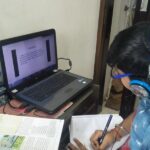Math sec 1 marks a crucial turning point in every student’s academic journey, representing the transition from primary school arithmetic to more sophisticated mathematical thinking. This foundational year sets the stage for future success in mathematics, introducing concepts that will follow students throughout their secondary education and beyond. Understanding what lies ahead can transform anxiety into confidence and help students tackle this important year with the right mindset and preparation.
Understanding the Secondary One Mathematics Landscape
The shift to secondary mathematics represents more than just harder sums. Students encounter a structured curriculum that builds systematic thinking and problem-solving abilities. The Secondary 1 maths syllabus in Singapore follows a carefully designed framework that introduces algebra, geometry, statistics, and number theory in ways that connect to real-world applications.
Unlike primary school mathematics, which focuses heavily on numerical fluency, secondary one mathematics demands abstract thinking. Students must now work with variables, understand relationships between quantities, and apply multiple concepts simultaneously to solve complex problems.
Core Topics That Define Secondary 1 Mathematics
The curriculum covers several essential domains that form the backbone of mathematical literacy:
•Numbers and Algebra
Students work with integers, rational numbers, and basic algebraic expressions. This includes understanding positive and negative numbers, fractions, decimals, and percentages at a more sophisticated level.
•Geometry and Measurement
The study moves beyond basic shapes to explore properties of angles, triangles, quadrilaterals, and circles. Students learn geometric reasoning and develop spatial awareness.
•Statistics and Probability
Introduction to data handling, including organizing information, creating representations, and drawing conclusions from statistical displays.
•Ratio and Proportion
Building on primary school foundations, students tackle more complex proportional relationships and their applications.
Why Secondary One Mathematics Feels Different
The adjustment to sec 1 math often challenges students because the subject requires a different cognitive approach. Primary school mathematics typically presents problems with clear solution paths. Secondary mathematics, however, expects students to identify which concepts to apply, combine multiple techniques, and explain their reasoning.
As the Singapore mathematics framework emphasizes, problem-solving sits at the heart of mathematical learning. Students must develop metacognitive awareness, understanding not just how to solve problems but why certain approaches work.
Essential Skills for Mastering Sec 1 Maths
Success in secondary one mathematics requires developing specific competencies:
•Algebraic thinking
The ability to work with letters representing numbers and understand variables as generalizations rather than specific values.
•Logical reasoning
Making connections between concepts and justifying mathematical statements with sound arguments.
•Visual-spatial skills
Interpreting geometric figures, understanding transformations, and visualizing mathematical relationships.
•Computational fluency
While calculators become available, mental mathematics and number sense remain crucial for understanding concepts deeply.
Practical Strategies for Secondary Mathematics Success
Students who thrive in math sec 1 typically adopt certain habits. First, they engage actively with problems rather than passively copying worked examples. Mathematics requires doing, not just watching. Working through problems independently, making mistakes, and learning from those errors builds genuine understanding.
Second, successful students connect new concepts to prior knowledge. When learning algebra, they recognize how it extends arithmetic principles. This connective thinking creates a coherent mathematical framework rather than isolated facts.
Third, they seek help strategically. Asking specific questions about particular steps or concepts proves more effective than general requests for help. This targeted approach develops independence and problem-solving resilience.
The Role of Practice and Consistency
Mathematics mastery emerges through consistent engagement rather than intensive cramming. Daily practice, even in short sessions, builds fluency and confidence. Students should work through varied problem types, not just repeat similar questions.
Review remains equally important. Revisiting earlier topics prevents knowledge decay and strengthens connections between concepts. Mathematics builds cumulatively, so maintaining prior learning supports future success.
Common Challenges and How to Overcome Them
Many students struggle with the abstraction in secondary mathematics. Algebra feels disconnected from tangible reality. Using concrete examples and real-world applications helps bridge this gap. Understanding that ‘x plus 3 equals 7’ represents any situation where adding 3 to an unknown quantity gives 7 makes algebra purposeful.
Another common difficulty involves negative numbers and their operations. Visual representations, such as number lines, transform abstract rules into comprehensible concepts. Similarly, geometric properties become clearer through drawing and manipulating figures rather than memorizing theorems.
Looking Ahead with Confidence
The mathematical journey through secondary school builds progressively, with each year deepening understanding and expanding applications. Students who establish strong foundations during their first year position themselves for continued success. They develop not just mathematical knowledge but also persistence, logical thinking, and problem-solving abilities that serve them across all academic subjects and in life beyond school.
Parents and students should view challenges as normal parts of learning rather than signs of inadequacy. Every mathematician, from beginners to experts, encounters difficulties. The difference lies in approaching obstacles with curiosity and determination.
Building a Strong Mathematical Foundation
Success begins with understanding that mathematics rewards effort and strategy over innate talent. Students who embrace challenges, learn from mistakes, and maintain consistent practice develop genuine competence. The skills acquired during this foundational year extend far beyond examinations, preparing students for advanced mathematics and analytical thinking in countless fields.
With the right approach, proper support, and consistent effort, every student can achieve success in math sec 1.
















